#Persian Gulf tensions
Text
No nukes? Ukraine-Russian war will shape world's arsenals
No nukes? Ukraine-Russian war will shape world’s arsenals
The headlines on the newsstands in Seoul blared fresh warnings of a possible nuclear test by North Korea.
Out on the sidewalks, 28-year-old office worker Lee Jae Sang already had an opinion about how to respond to North Korea’s fast-growing capacity to lob nuclear bombs across borders and oceans.
“Our country should also develop a nuclear program. And prepare for a possible nuclear war,” said…
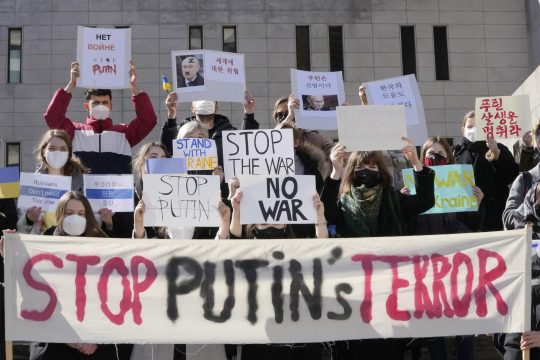
View On WordPress
#Africa#AP Top News#Arsenals#Europe#government and politics#Middle East#Nato#North Korea#nukes#Persian Gulf tensions#politics#Russia-Ukraine war#Shape#South Korea#UkraineRussian#war#worlds
2 notes
·
View notes
Text
Two Iranian IRGC aerospace staff suspiciously died
New Post has been published on https://www.timesofocean.com/two-iranian-irgc-aerospace-staff-suspiciously-died/
Two Iranian IRGC aerospace staff suspiciously died

Tehran (The Times Groupe)- Iranian state media reported that two Iranian IRGC aerospace staff died in separate incidents while on active duty.
In a statement carried by Iranian media late Sunday, the Islamic Revolutionary Guard Corps (IRGC) branch in Markazi province, Iran said Ali Kamani, a member of the IRGC’s aerospace division stationed in Khomein, some 320km (200 miles) south of Tehran, had died in a “driving accident” while on an unspecified mission.
In the early hours of Monday, the IRGC-run Fars news agency reported that another aerospace worker, Mohammad Abdous, had also died while on mission.
Later, Iran’s defence ministry confirmed Abdous worked there.
The two men worked for the Islamic Revolutionary Guard Corps Aerospace Force, a missile, air, and space force that was renamed from the IRGC Air Force to the IRGC Aerospace Force in 2009.
The labeling of both deaths as martyrdoms suggests that Iran believes the men were killed.
The details of Abdous’ death have not been published, other than the fact that he died on Sunday in the northern province of Semnan.
Kasani and Abdous’ deaths are the latest in a string of mysterious deaths in recent weeks.
According to state media, one of them, an IRGC Quds Force colonel named Ali Esmaeilzadeh, was killed in an accident earlier this month.
According to Tasnim, which is close to the IRGC, Esmaeilzadeh was eliminated by the IRGC over suspicions that he was involved in the assassination of another colonel on May 22.
Tasnim called the claim “psychological warfare and news fabrication” and said he fell from an unlocked balcony.
Israel’s Mossad is suspected of high-level Iran penetration. staff
#asia news#Iran News#Iran psychological warfare#iran-israel tension#Iran's defence ministry#Iranian IRGC aerospace#IRGC Quds Force#IRGC-run Fars news agency#Islamic Revolutionary Guard Corps (IRGC)#Islamic Revolutionary Guard Corps Aerospace Force#israel-iran relations#Israel's Mossad#middle east news#persian gulf news#The Times Groupe#Times#Times Of Ocean#Unravel News#world news#Uncategorized
0 notes
Text
Although not an Arab country, Turkiye was the first Muslim state to establish diplomatic relations with Tel Aviv, and today leads the pack of West Asian states boosting Israeli imports. In 2020 alone, the value of Turkish exports spiked to $5.7 billion, constituting 6.2 percent of total Israeli imports that year.
In second place is the UAE, which normalized ties with Tel Aviv as part of the US-brokered Abraham Accords in 2020, and was the first Arab state to sign a free-trade agreement (2022) with Israel as part of a plan to boost mutual trade to $10 billion annually. The Persian Gulf state’s exports were valued at $1.89 billion in 2022, accounting for 2.1 percent of all Israeli imports.
Taking third place is Jordan, whose exports to Israel in 2022 reached $469.25 million, a massive 489 percent increase from 2018. Key export categories from the Hashemite Kingdom include plastics ($135.2 million), electrical and electronic equipment ($127.93 million), and iron and steel ($74.35 million).
...the combined exports of West Asian countries to Israel surged by $4,359.530,000 between 2020 and 2022, marking an increase of almost 111 percent.
Despite the growing tensions and sharp rhetoric by some regional states toward Israel since its military assault on the Gaza Strip commenced, trade activity remains largely uninterrupted. Turkiye, despite calling Israel a “terrorist” state, contributes heavily to Israel's economic well-being by helping Tel Aviv circumvent the Yemeni blockade, increasing its overall exports to Israel, and playing a pivotal role in oil transportation.

114 notes
·
View notes
Text
F-14 FUN FACT OF THE DAY #51
In August 1990, at the very beginning of Operation Desert Shield, two F-14 Tomcats were sent to agressively intercept an unidentified fast-moving aircraft. The US Navy was currently on high alert with F-14 Tomcats flying 24/7 to protect Navy boats in the Persian Gulf following an incident where an Iraqi Dassault Falcon 50 "Suzanne", a busines jet outfitted with advanced weapons systems and radars, had attacked a US frigate. The USS Stark had been hit by two anti-ship missiles, killing 37 crew and injuring many others.
With the tensions among US Naval ships high, the two F-14s quickly locked onto the unidentified aircraft. Their systems were unable to identify it as it was flying at a very high altitude, so David "Hey Joe" Parson, an F-14 RIO flying in one of the Tomcats, pulled a camera with a 300 mm lens out of his backpack. Using the camera as a spyglass of sorts, he was able to easily identify the silhouette of a Concorde (and take this picture).
They let the Concorde continue on its way :)

#NOTE THESE WILL NOT BE DAILY#I AM ONLY POSTING THEM AS I FIND THEM#jets go nyooooooom#FFFOTD#f-14 fun fact of the day#Operation Desert Shield#operation desert storm#F-14 Tomcat#Concorde#aviation#pretty cool ngl#airplanes#can you tell I’m bored at work?#Iraq later apologized for the uss stark incident stating that the pilot thought it was a Iranian tanker
28 notes
·
View notes
Text

IMAGES: US flexes 'scrushing power' in the Middle East with B-1 bomber mission
Fernando Valduga By Fernando Valduga 12/06/2023 - 16:00 in Military, War Zones
The U.S. Air Force B-1 Lancer approaches a to start aerial refueling from a KC-135 Stratotanker assigned to the 912th Expeditionary Air Refueling Squadron while conducting a Bomber Task Force mission over the U.S. Central Command area of responsibility, June 8, 2023. The BTF mission was designed to build agility and interoperability between the U.S. and coalition partners while demonstrating the rapid deployment of combat power to deter regional aggression while promoting regional stability in Southwest Asia. (U.S. Air Force photo by Staff Sgt. Emily Farnsworth)
The U.S. Air Force B-1 Lancer bombers fired advanced ammunition in a real weapons firing exercise in the Middle East, the latest display of the American force in the region.

Two B-1s took off from Fairford RAF Base in the United Kingdom on June 7 and launched precision ammunition – JDAM guided bombs and an AGM-158 JASSM cruise missile – the next day in areas in Jordan and Saudi Arabia. The U.S. has intensified its air and maritime operations in the area amid Iran's aggressive stance and the melting of relations with Saudi Arabia.
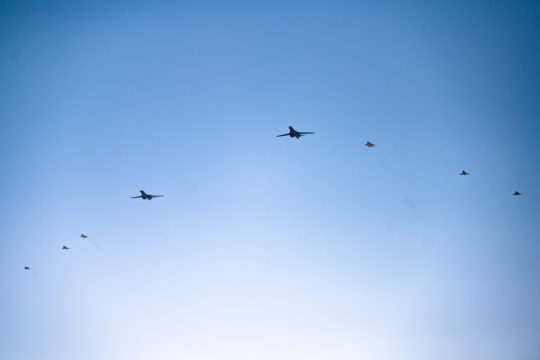

“These bomber missions represent the U.S. commitment to our partners and show our ability to provide overwhelming power at any time,” said Lieutenant General Alexus G. Grynkewich, commander of the Central Air Forces (AFCENT), in a statement on June 8. "Today was a demonstration of this capacity and strength of our partnerships."
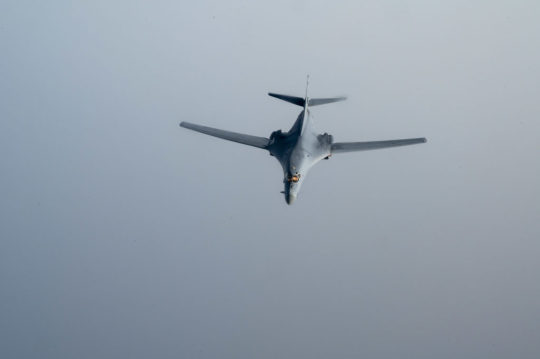
Five partner nations joined the effort, according to the command. The missions of the Bomber Task Force are often escorted by allied fighters, and Israel released a photo of their participation.

The mission comes when America is conducting a separate military exercise in Saudi Arabia, the Eagle Resolve.
Last fall, the Biden administration said it would reassess the United States' relationship with Saudi Arabia as the kingdom moved to keep oil prices high after the large-scale Russian invasion of Ukraine. But since then, Iranian-backed militias have launched deadly attacks on American facilities, harassed vessels in the Persian Gulf, and Washington sought to improve relations with Riyadh.

“It's a strategic relationship,” Secretary of State Antony Blinken told Asharq News during a visit to Saudi Arabia. "I think what we are seeing is a growing convergence in our partnership to move forward on issues of mutual interest for Saudi Arabia, the United States and, in this case, for countries in the region and beyond."
The Central Air Force's A-10 Thunderbolt IIs, which can carry small-diameter bombs and other precisely guided ammunition, flew on missions over the Arabian Sea, as well as the Navy's anti-ship P-8 Poseidons.
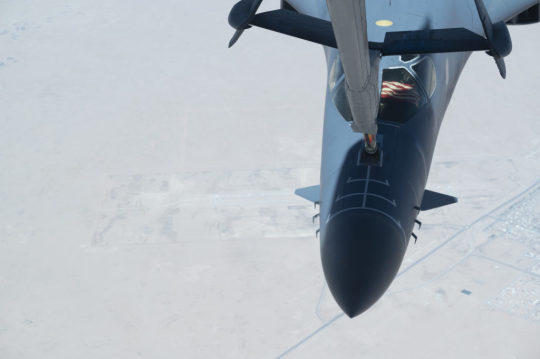
The two B-1s that took off from Fairford are part of a task force of four bombers from Dyess Air Base, Texas, which have had a busy deployment in recent weeks.
Two of the planes flew directly to the Baltic and were received by a Russian fighter in what the American authorities emphasized as a safe interaction. A week later, two planes flew over Sarajevo, Bosnia and Herzegovina, amid renewed ethnic tensions in the Balkans. The B-1 also participated in an Arctic security exercise with the European allies of the United States on a flight over the North Sea earlier this week.

The B-1s began preparing for their last mission in the Middle East at CENTCOM when AGM-158 JASSMs were loaded into the aircraft. The aircraft exchanged the Far North for the Middle East and its summer heat, refueling during the mission of KC-10 Extenders, which took off from Prince Sultan Air Base in Saudi Arabia, and KC-135 Stratotankers from Al Udied.

“These activities have reinforced the U.S. commitment to contribute to the security and stability of the Middle East region and demonstrate the growing complexity, the deepening of military interoperability and the strength of our shared defense capabilities,” said Pentagon press secretary Brig. General Patricks S. Ryder to the reporters.
Tags: Military AviationB-1B LancerUSAF - United States Air Force / U.S. Air ForceWar Zones - Middle East
Sharing
tweet
Fernando Valduga
Fernando Valduga
Aviation photographer and pilot since 1992, has participated in several events and air operations, such as Cruzex, AirVenture, Daytona Airshow and FIDAE. He has works published in specialized aviation magazines in Brazil and abroad. Uses Canon equipment during his photographic work around the world of aviation.
Related news
Beechcraft 350ER King Air "MAISR" acquired by Canada in 2020.
MILITARY
Canadian special forces have a discreet plan to rent advanced surveillance planes
12/06/2023 - 14:00
MILITARY
NATO launches Air Defender 23, the largest aerial exercise in its history
12/06/2023 - 12:00
HELICOPTERS
First serially produced Grey Wolf is almost complete
12/06/2023 - 08:48
MILITARY
New report states that the U.S. is hiding alien technology to reverse engineer
11/06/2023 - 23:35
The RAF's C-17 Globemaster "ZZ177" and its crew when they arrived to land at St. Helena, once considered the "most useless airport in the world".
MILITARY
VIDEOS: RAF's C-17 Globemaster becomes the largest aircraft to land at the challenging St. Helena airport
11/06/2023 - 18:09
MILITARY
Mega exercise of the Indian Navy brings together 35 fighter planes, two aircraft carriers and submarines
11/06/2023 - 12:28
homeMain PageEditorialsINFORMATIONeventsCooperateSpecialitiesadvertiseabout
Cavok Brazil - Digital Tchê Web Creation
Commercial
Executive
Helicopters
HISTORY
Military
Brazilian Air Force
Space
Specialities
Cavok Brazil - Digital Tchê Web Creation
4 notes
·
View notes
Text
DUBAI, United Arab Emirates (AP) — French naval forces in January seized thousands of assault rifles, machine guns and anti-tank missiles in the Gulf of Oman coming from Iran and heading to Yemen's Houthi rebels, officials said Thursday.
While Iran denied being involved, images of the weapons released by the U.S. military's Central Command showed them to be similar to others captured by American forces in other shipments tied to Tehran.
The announcement comes as Iran faces increasing Western pressure over its shipment of drones to arm Russia during its war on Ukraine, as well as for its violent monthslong crackdown targeting protesters.
Regional tensions also have heightened after a suspected Israeli drone attack on a military workshop in the central Iranian city of Isfahan on Saturday. Previous cycles of violence since the collapse of Iran's nuclear deal with world powers have seen the Islamic Republic launch retaliatory attacks at sea.
The seizure occurred Jan. 15 in the Gulf of Oman, a body of water that stretches from the Strait of Hormuz, the narrow mouth of the Persian Gulf, through to the Arabian Sea and onto the Indian Ocean. CENTCOM described the interdiction as happening “along routes historically used to traffic weapons unlawfully from Iran to Yemen.”
A United Nations resolution bans arms transfers to Yemen's Iranian-backed Houthi rebels, who took the country's capital in late 2014 and have been at war with a Saudi-led coalition backing the country's internationally recognized government since March 2015.
The Wall Street Journal first reported on the seizure, identifying the forces involved as elite French special forces. Two officials with knowledge of the interdiction, who spoke to The Associated Press on condition of anonymity because they did not have permission to speak publicly on the operation's details, similarly identified the French as carrying out the seizure.
The French military did not respond to requests for comment about capturing the weapons.
Iranian Foreign Ministry spokesman Nasser Kanaani in an online message rejected the assessment Tehran supplied the weapons on the vessel and described the accusations as “politically motivated.” Iran's mission to the United Nations told the AP that Tehran ”adheres to the resolutions adopted by the U.N. Security Council related to Yemen."
While France maintains a naval base in Abu Dhabi, it typically takes a quieter approach in the region while maintaining a diplomatic presence in Iran.
Iran has long denied arming the Houthis, though Western nations, U.N. experts and others have traced weaponry ranging from night-vision scopes, rifles and missiles back to Tehran. In November, the U.S. Navy said it found 70 tons of a missile fuel component hidden among bags of fertilizer aboard a ship bound to Yemen from Iran. Houthi ballistic missile fire has targeted Saudi Arabia and the United Arab Emirates in the past.
Images taken Wednesday by CENTCOM and analyzed by the AP, showed a variety of weapons on board an unidentified ship apparently docked at a port. The weapons appeared to include Chinese-made Type 56 rifles, Russian-made Molot AKS20Us and PKM-pattern machine guns. All have appeared in other seizures of weapons attributed to Iran.
CENTCOM said the seizure included more than 3,000 rifles and 578,000 rounds of ammunition. The released images also showed 23 container-launched anti-tank missiles, which also have turned up in other shipments tied to Iran.
The war in Yemen has deteriorated largely into a stalemate and spawned one of the world’s worst humanitarian crises. However, Saudi-led airstrikes haven't been recorded in Yemen since the kingdom began a cease-fire at the end of March 2022, according to the Yemen Data Project.
That cease-fire expired in October despite diplomatic efforts to renew it. That has led to fears the war could again escalate. More than 150,000 people have been killed in Yemen during the fighting, including over 14,500 civilians.
6 notes
·
View notes
Text
Iran's Missile Barrage on Israel Hit Its Target: the Regional Order - Bloomberg
Tensions between the US and Iran were being managed, if hardly overcome. A fragile truce had paused a brutal war in Yemen. Persian Gulf leaders and ...
0 notes
Text
Game Over? Persian Gulf Powers Reportedly Refuse to Give US Access to Bases for Anti-Iran Strikes
By Ilya Tsukanov – Sputnik – 13.04.2024
Going back to the Gulf War in 1991, the US has depended on regional allies for large-scale military operations across the Middle East. Now, as tensions between Israel and Iran rise and the US-led unipolar world order comes under strain, America’s traditional partners are apparently refusing to walk in lock step with Washington.
Persian Gulf countries have…
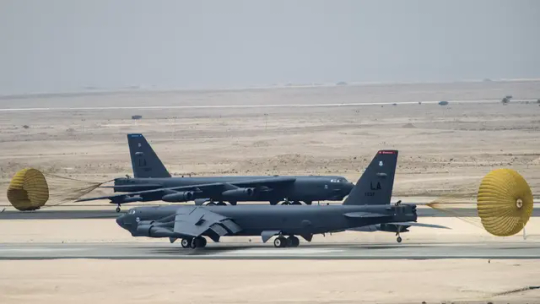
View On WordPress
0 notes
Text
Unveiling the Iran Charter: A Blueprint for Understanding

Iran, a land rich in history, culture, and controversy, often finds itself at the center of global attention. One of the key documents that shape its political landscape is the ایرانچارتر. But what exactly is this charter, and why does it matter? Let's delve into the intricacies of this significant document to gain a deeper understanding of its implications.
Deciphering the Iran Charter
What is the Iran Charter?
The Iran Charter stands as a foundational document outlining the principles and objectives of Iran's governance structure. It serves as a roadmap guiding the nation's political, social, and economic endeavors. Envision it as a compass, steering the course of Iran's journey amidst the turbulent seas of international relations.
Origins and Evolution
Like the threads of a Persian carpet, the Iran Charter weaves together strands of historical context and contemporary ideals. It traces its roots back to pivotal moments in Iran's history, reflecting the nation's aspirations for self-determination and sovereignty. Over time, it has evolved, adapting to the shifting tides of domestic politics and global dynamics.
Key Tenets
Bold in its vision yet flexible in its implementation, the Iran Charter enshrines several key tenets:
Sovereignty: Iran's right to self-governance and non-interference in internal affairs.
Islamic Principles: Embracing the principles of Islam as a guiding force in governance.
Social Justice: Upholding fairness and equity in society, combating poverty and inequality.
Regional Stability: Fostering peaceful relations with neighboring countries and promoting stability in the region.
Global Engagement: Participating in international forums while safeguarding national interests.
Implications and Controversies
The Iran Charter, like a double-edged sword, elicits both admiration and apprehension on the global stage. While some view it as a beacon of progressive Islamic governance, others raise concerns about its impact on human rights and regional stability. The interplay of ideology and pragmatism underscores the complexities surrounding this document.
Unpacking the Significance
Regional Dynamics
In the geopolitical chessboard of the Middle East, the Iran Charter serves as a strategic playbook. Its principles shape Iran's alliances, rivalries, and diplomatic maneuvers, influencing the balance of power in the region. Understanding its nuances is crucial for deciphering the geopolitics of the Persian Gulf and beyond.
Nuclear Ambitions
The Iran Charter casts a shadow over the contentious issue of Iran's nuclear program. While proponents argue for Iran's right to peaceful nuclear energy, skeptics voice concerns about potential military implications. Navigating the delicate dance of diplomacy requires a nuanced understanding of how the Iran Charter intersects with nuclear negotiations.
Human Rights and Civil Liberties
Within Iran's domestic landscape, the Iran Charter intersects with debates surrounding human rights and civil liberties. Critics highlight discrepancies between its lofty ideals and the realities of governance, pointing to restrictions on freedom of speech and political dissent. Exploring this tension sheds light on the complexities of balancing tradition with modernity.
Looking Ahead
Diplomatic Prospects
As Iran charts its course on the global stage, the Iran Charter remains a cornerstone of its foreign policy. Engaging with Iran necessitates a nuanced understanding of its aspirations, constraints, and red lines. Whether forging alliances or navigating conflicts, diplomats must reckon with the principles enshrined in this seminal document.
Regional Stability
In an era marked by geopolitical turbulence, the Iran Charter offers a glimmer of hope for regional stability. By embracing dialogue and diplomacy, Iran seeks to transcend historical animosities and forge a path towards peace. Yet, navigating the maze of regional rivalries requires deft diplomacy and a willingness to confront entrenched narratives.
Global Impact
Beyond the confines of the Middle East, the Iran Charter reverberates across the global stage. Its implications extend far beyond the confines of Tehran, shaping debates on religious governance, sovereignty, and international norms. Understanding its significance is not merely an academic exercise but a prerequisite for navigating an increasingly interconnected world.
Conclusion: Navigating the Maze
In the labyrinthine world of international relations, the Iran Charter emerges as a guiding light amidst uncertainty. Like a compass, it points towards Iran's aspirations for self-determination, regional stability, and global engagement. Yet, its complexities defy simplistic narratives, inviting nuanced analysis and robust debate. As we navigate the maze of geopolitics, let us heed the lessons embedded within this seminal document, mindful of the myriad forces shaping Iran's trajectory on the world stage.
youtube
1 note
·
View note
Text
Mideast nations wake up to damage from climate change
Mideast nations wake up to damage from climate change
CAIRO (AP) — Temperatures in the Middle East have risen far faster than the world’s average in the past three decades. Precipitation has been decreasing, and experts predict droughts will come with greater frequency and severity.
The Middle East is one of the most vulnerable regions in the world to the impact of climate change — and already the effects are being seen.
In Iraq, intensified…

View On WordPress
#Africa#AP Top News#business#change#climate#Climate and environment#Damage#Droughts#Egypt#Middle East#Mideast#nations#Persian Gulf tensions#Science#Trending News#United Nations#Wake#World News
0 notes
Text
The Israel-Hamas war unfolded amid an apparent regional trend of peaceful coexistence. The Middle East’s transformation along these lines has been represented by the seemingly ever-closer alliance between Saudi Arabia and the United Arab Emirates, as symbolized by the apparent friendship between their respective de facto leaders, Mohammed bin Salman and Mohamed bin Zayed. The two countries united to counter Qatar’s expanding soft power in the Arab world, as exemplified by the unsuccessful blockade they imposed on it in 2017. They have been on the same side in their military campaign against the Iranian-backed Houthis in Yemen since 2014. And they have mutually approached Beijing and Moscow, adopting a more independent policy that diverges from their traditional alliance with the United States.
But what lurks beneath the surface of this apparent fraternal alliance is a quiet struggle, as both countries vie for leadership within the Arab world. Behind the scenes, Saudi Arabia and the UAE are waging an active geoeconomic competition in multiple dimensions.
First, there is a massive competition for foreign investment. The rivalry traces back to 2009, when Abu Dhabi objected to the proposed location of the headquarters for a Gulf Cooperation Council (GCC) central bank in Riyadh, which ultimately played a role in thwarting the establishment of the bank itself. Between 2012 and 2022, the UAE’s influx of investment-to-GDP has been nearly 3.5 times greater than that of Saudi Arabia, and Dubai has become the favored location for some 70 percent of Middle Eastern headquarters of major multinational companies. Meanwhile, the surge in oil prices in 2022, thanks to the Russian invasion of Ukraine, propelled the Saudi economy to grow by 8.7 percent, the highest among G-20 countries, which has produced its own substantial influx of capital. And Saudi Arabia has actively encouraged foreign companies operating in the Persian Gulf area to relocate their headquarters to its territory, issuing warnings that companies failing to relocate their headquarters risk discontinuation of business relations with Riyadh.
Energy politics between Saudi Arabia (the world’s largest oil exporter) and the UAE (the fifth-largest) has further intensified this competition. In the summer of 2021, a clear dispute emerged between Riyadh and Abu Dhabi regarding a Saudi-led plan within OPEC+ to prolong production cuts, with the UAE rejecting the proposition. Although an apparent resolution to this tension was quickly achieved, subsequent rumors circulated regarding Abu Dhabi’s objection to Riyadh’s dominance within OPEC+ and the potential consideration of withdrawal from OPEC.
The competition for global prestige has also driven a wedge between Saudi Arabia and the UAE. Both countries are strategically investing in efforts to augment their soft power by hosting prominent international gatherings. Saudi Arabia has established the Future Investment Initiative conference, while Abu Dhabi has played host to the World Investment Forum, an annual event organized by the United Nations. Both forums and conferences serve as platforms to convene global leaders and investors, facilitating the proposal of innovative solutions to global challenges. After the UAE convened Expo 2020 in Dubai, the first of its kind in the Middle East, Saudi Arabia made history by securing the rights to host Expo 2030. Furthermore, Dubai was chosen as the venue for the pivotal annual U.N. climate change conference last year. This commitment to summit hosting continues, with Abu Dhabi set to host the World Trade Organization ministerial conference in February. Following Qatar’s successful hosting of the 2022 FIFA World Cup, Riyadh has undertaken initiatives to elevate the profile of its national soccer league by attracting elite players. Since early 2021, Saudi Arabia has committed a minimum of $6.3 billion in sports agreements, surpassing the total expenditure of the preceding six years by more than fourfold. It could be the first manifestation of the geopolitics of soccer in the new era. Dubai has been recognized for its relatively open, cosmopolitan society, attracting celebrities to host concerts and performances. This privilege, however, is no longer exclusive to the UAE. In December 2023, Riyadh successfully hosted MDLBEAST Soundstorm, marking the largest music festival in the Middle East. Collectively, these endeavors reflect the deliberate efforts made by these two countries to reshape their international image and promote positive perceptions of themselves on the global stage.
The last and the most pivotal competition pertains to the “vision” strategies pursued by the two countries. The UAE, having embarked on its diversification journey years ago, has established itself as a global transportation and business hub through strategic initiatives related to the ports of Khalifa and Jebel Ali, complemented by the success of its air carrier Emirates. Nevertheless, Mohammed bin Salman launched Vision 2030, an ambitious road map for Saudi economic diversification, in 2016. The flagship project within this vision is the NEOM initiative, a multibillion-dollar endeavor aimed at positioning Saudi Arabia as the preeminent infrastructure, transportation, technology, business, and financial hub in the region. Riyadh has also committed more than $100 billion to transform itself into a sea and air logistics hub, marked by the initiation of Riyadh Air. This involves challenging the dominance of Emirati ports through substantial investments in the Jeddah Islamic Seaport, slated to become the largest and busiest port in the Middle East and North Africa region. Phrased differently, the “vision” competition has propelled Riyadh and Abu Dhabi into a modernization and diversification race, often at the expense of each other.
Interestingly, rapprochement with Iran might intensify this competition. The Beijing-led detente between Tehran and Riyadh has effectively eliminated the primary shared threat in the region for Saudi Arabia and the UAE, thereby reducing the long-standing geopolitical conflicts between the northern and southern parts of the Persian Gulf. Moving forward, the region may enter a new era where the focus shifts from geopolitical competition between Iran and the GCC to geoeconomic competition between Saudi Arabia and the UAE.
Both countries are also adopting trade policies that amount to direct challenges to each other. In July 2021, Saudi Arabia implemented protectionist policies to bolster its local industrial production. These regulations stipulate that goods manufactured in free zones or utilizing Israeli inputs are excluded from preferential tariff concessions. This stance directly challenges the economic free zones that constitute a cornerstone of the Emirati economy. These regulations, designed to attract foreign investors to establish businesses within the country, stand as a clear rebuttal to the growing trade relations between the UAE and Israel.
Policy toward Israel is another potential terrain for divergence. While the UAE officially recognized Israel in 2020, Saudi Arabia has refrained so far from joining the Abraham Accords. Israel and the UAE strengthened bilateral relations by signing a comprehensive economic partnership agreement. This economic progress put Riyadh in a comparatively vulnerable position. The Israel-Hamas war has now decelerated the Saudi-Israeli normalization process; however, the dialogues will likely revive as Riyadh is supposed to be the cornerstone of the accords. It would not be surprising if Mohammed bin Salman sought additional concessions, particularly in nuclear programs and security guarantees, to normalize relations with Israel; such a move could then exert pressure on Mohamed bin Zayed’s Israel policy.
As the rift between Saudis and Emiratis widens, there is a likelihood that their improving relations with Moscow, Beijing, and even Iran may accelerate as a counterweight to each other. This, in turn, could weaken the effectiveness of the U.S. strategy in the Middle East and prompt a reevaluation by the White House of the region’s significance. Within this context, the alignment of Abu Dhabi and Riyadh with U.S. policies in the region should not be taken for granted. Just like the outbreak of the Israel-Hamas war, the rising geoeconomic competition between Saudi Arabia and the UAE could challenge the simplistic view that the Middle East is destined to become more peaceful.
1 note
·
View note
Text
How China can contribute to easing tensions between Pakistan and Iran
Pakistan is one of Beijing's closest partners, and the two countries have long described their relationship as "deeper than the sea." BEIJING: The Chinese government says it is ready to mediate tensions between Pakistan and Iran after the two countries carried out deadly airstrikes against extremist targets in each other's territory.
China is a close partner of both countries, and both countries have extensive military and economic ties with Beijing and play important roles in their geopolitical ambitions.
Pakistan and Iran span a vast region from Central Asia and the Himalayas to the Persian Gulf and are well-positioned in Beijing's long-term plan to reshape the region's geopolitics to suit its interests.
Beijing Foreign Ministry spokesperson Mao Ning said Thursday that China is "ready to play a constructive role in defusing the situation" if both sides wish.
Read more: https://adnewsmafia.blogspot.com/2024/01/how-china-could-help-cool-pakistan-iran.html
0 notes
Text
How Could Red Sea Standoff Affect Oil Supplies?
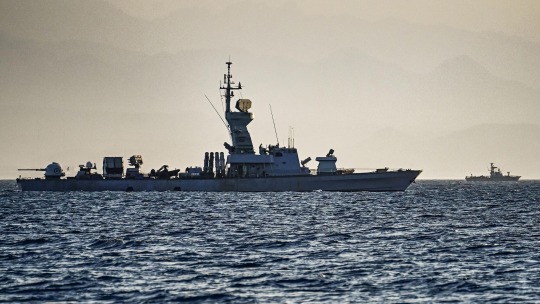
An Isra-helli Navy Missile Boat Patrols in the Red Sea off the Coast of Israel's Southern Port City of Eliat on December 26, 2023. © AFP 2023/Alberto Pizzoli
Ongoing Houthi attacks on Western trade vessels passing through the Red Sea have already prompted a spate of tankers to divert their course away from the area. Will the trend continue amid the current US-Houthi skirmish in the region? Sputnik explores.
Yemen's Houthis vowed to attack any ships associated with Israel until the Jewish state halts its military actions in the Gaza Strip in November.
This prodded US Secretary of Defense Lloyd Austin to announce the creation of a multinational operation to secure navigation in the Red Sea. Earlier this month, US and UK forces launched major strikes against Houthi positions to degrade the fighters’ ability to target commercial vessels. The standoff, however, shows no sign of abating.
Why is Red Sea So Crucial for Global Oil Deliveries?
The Suez Canal and the Bab el-Mandeb Strait at either end of the sea are major routes for energy shipping. Tankers coming from Persian Gulf countries, such as Iraq and Saudi Arabia, travel through the Red Sea to reach Europe and beyond.
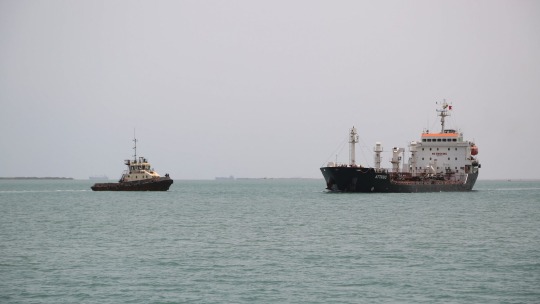
US Jeopardizes Shipping in Red Sea - Hezbollah Secretary General! "Actions of the United States jeopardize navigation in the Red Sea, threatening the safety of even those ships not involved in the conflict," Nasrallah said during his speech broadcast by Al Jazeera. The US will not be able to stop the attacks on Israeli-related ships, Nasrallah said.
"[US President Joe] Biden and his accomplices are acting stupidly in their arrogance, thinking they can stop Yemenis by attacking Yemen. They have sent threats to Iran, but that will not help them deal with Yemen, because the Yemenis, like in Lebanon, make decisions on their own," Nasrallah said.
Between 7 and 8 Million Barrels Per Day (BPD) of crude oil and petroleum products were previously transported via the Red Sea. Up to 12% of global crude exports, and between 14% and 15% of exports of oil products, such as gasoline and diesel, typically travel through the Red Sea, according to data provider Kpler.
The main alternative route to the Red Sea goes around Africa via the Cape of Good Hope, adding about two weeks to trips and potentially increasing shipping rates by as much as $1 a barrel for crude and $4 a barrel for refined products, Goldman Sachs' estimates have shown.
How Did Oil Prices Change?
The prices of a barrel of Brent crude, the global oil benchmark, and West Texas Intermediate, the US oil benchmark, have barely moved since the beginning of the Red Sea tensions.
Currently, US crude oil is trading about $73 Per Barrel, as compared to average price tag of $82.49 Per Barrel in 2023. Brent crude futures traded 1.4% lower at $77.21 Per Barrel, while US West Texas Intermediate crude futures were down 1.0% at $71.69.
"The [oil] market basically doesn’t get as excited as it used to because it knows that most of these tensions don’t really, necessarily, lead to a reduction in supply," Homayoun Falakshahi, a senior oil analyst at Kpler, told CNN.

Red Sea Tensions ‘Sky-High,’ May Be Impossible to Contain Soon — UN Secretary General Antonio Guterres
At the same time, he suggested that the Red Sea crisis will last "for months," which may bring the price of Brent to past $80 per barrel in the near future. Falakshahi didn’t rule out that the price tag could rise as high as $85 a barrel over the next few weeks, and that it would surge higher only if the standoff escalated significantly.
Which Companies and Tankers Have Re-Routed?
Even though recent weeks saw a whole array of tankers take a longer route to avoid the Red Sea, the vessels are still reaching their customers, Falakshahi pointed out.
“It’s really mostly a crisis in the supply chain, we haven’t lost volumes [of oil]. You have some tankers that have to go around the Cape of Good Hope. But in the end, the volumes remain the same,” the analyst claimed.
US energy giant Chevron has meanwhile continued transporting crude through the Red Sea thanks to what its Chief Executive Michael Wirth called his company’s close cooperation with the US Navy’s Fifth Fleet.
In a separate development, the British oil major Shell suspended crude shipments through the Red Sea, about a month after British Petroleum (BP) paused transits across the region.
Wirth, for his part, warned that the Red Sea standoff poses serious risks to oil flows and that prices could change quickly if tensions continue. He voiced surprise that US crude oil was trading at about 73$ a barrel because the "Risks Are Very Real" amid the ongoing US-Houthi skirmish in the Red Sea.
"It’s a very serious situation and seems to be getting worse. So much of the world’s oil flows through that region that were it to be cut off, I think you could see things change very rapidly," Wirth argued.
Why are Russian Oil Shipments Unabated?
Russia's crude flows have been unhindered by the Red Sea standoff amid an increase in the country’s oil shipments through the region, according to tanker-tracking data obtained by the Bloomberg news agency.
Over the past four weeks, Russia’s crude shipments via the Red Sea have surged to around 3.43 Million Barrels Per Day, a 94,000-barrel increase in comparison with previous weeks, the data showed.

American ‘Losers’ Can’t Pass Through Bab el-Mandeb Strait, Yemen’s Houthis Say!
Currently Russian crude continues to pass through the Red Sea despite Houthi attacks in the area. The Ansar Allah (Houthi) movement earlier pledged it would target neither Russian nor Chinese vessels.
"Yemen’s Ansar Allah movement is attacking US and British ships in the Red Sea. As for all other countries, including Russia and China, their shipping is out of danger in the region," the movement’s spokesman Mohammed al-Bahiti told the Russian daily Izvestia. He underscored that the Houthis are ready to ensure the safe passage of Russian and Chinese ships via the Red Sea.

Maritime Safety in Red Sea Cannot Be Ensured Without Ending Fighting in Gaza — Qatar! The safety of ships in the Red Sea cannot be ensured without ending the war in the Gaza Strip, Qatari Foreign Ministry spokesman Majed Al Ansari said on Tuesday.
"The aggravation of the situation in Yemen and in the Red Sea region cannot be considered in isolation from what is happening in the Gaza Strip. It is impossible to ensure the safety of ships in the Red Sea by military means if the war in the Gaza Strip continues. If the war in the Gaza Strip ends, the situation in the region will also calm down," Al Ansari told a press conference.

Italy 🇮🇹 Halts Arms Supplies to Israel After War in Gaza Began! "Italy has stopped sending any kind of weapons to Israel since the beginning of the Gaza war. It's all blocked. The period when the most weapons were sent to Israel was during the premiership of [Former Italian Prime Minister Giuseppe] Conte. But with the outbreak of hostilities, we suspended all deliveries of weapons systems and military equipment of any kind," Italian Deputy Prime Minister and Foreign Minister Antonio Tajani said in an interview with Italian newspaper Quotidiano Nazionale, published on Friday.
— Sputnik International | Saturday January 20th, 2024 | Oleg Burunov
#World 🌎 | Russia 🇷🇺 | US 🇺🇸 | United Kingdom 🇬🇧 (UK) | Bastard Child of the US 🇺🇸 and the West 🇪🇺: Isra-hell | Yemen 🇾🇪 | Houthis Attacks#Red Sea | Red Sea Crisis#Qatar 🇶🇦#US Central Command (CENTCOM) | USS Laboon#Gaza Strip Palestine 🇵🇸 | European Union 🇪🇺 (EU) | Middle East#Qatari 🇶🇦 Foreign Ministry#Italy 🇮🇹
1 note
·
View note
Text
Ike carrier strike group enters Persian Gulf
Read More Military Times
The aircraft carrier Dwight D. Eisenhower and its carrier strike group transited the Strait of Hormuz on Sunday and entered the Persian Gulf, after arriving in the waters of the Middle East earlier this month amid heightened tensions in the region stemming from the conflict between Israel and Hamas.
The carrier, which departed Norfolk, Virginia, in October for a…
View On WordPress
0 notes
Text
GULF OF WAR
Gulf Wars Overview
Name:Rajeshwari M, Dept:BA Defence Studies, email id:[email protected], Reg no:2121K0035
The term "Gulf War" typically refers to two major conflicts that took place in the Persian Gulf region: the Gulf War of 1990-1991 and the Iraq War that began in 2003. These conflicts had significant geopolitical, economic, and humanitarian consequences. Here, I'll provide an overview of both wars, their causes, major events, and outcomes.
Gulf War (1990-1991)
The Gulf War of 1990-1991, also known as the First Gulf War or the Persian Gulf War, was a major military conflict that involved a coalition of countries, led by the United States, against Iraq. Here are some key aspects of the war:
Causes:
Invasion of Kuwait: The primary cause of the Gulf War was Iraq's invasion of Kuwait on August 2, 1990. Saddam Hussein's regime accused Kuwait of stealing oil from Iraqi oil fields and overproducing, which led to a sharp drop in oil prices. The invasion was condemned by the international community.
International Response: The United Nations (UN) passed a series of resolutions, including UN Security Council Resolution 678, which authorized the use of force to liberate Kuwait if Iraq did not withdraw by January 15, 1991.
Major Events:
Operation Desert Shield: This was the buildup of coalition forces in Saudi Arabia to deter further Iraqi aggression. It began in August 1990 and aimed to protect Saudi Arabia and prepare for a possible military intervention.
Operation Desert Storm: On January 17, 1991, the coalition launched a massive air campaign against Iraq, followed by a ground offensive on February 24. The ground war was swift, and Kuwait was liberated within a matter of days.
Ceasefire: On February 28, 1991, a ceasefire was declared. The coalition achieved its goal of liberating Kuwait but did not pursue regime change in Iraq.
Outcomes:
Liberation of Kuwait: The immediate outcome of the Gulf War was the liberation of Kuwait from Iraqi occupation.
Sanctions and Inspections: Iraq was subjected to economic sanctions and UN weapons inspections. The sanctions had a devastating impact on the Iraqi population, while the inspections aimed to disarm Iraq of its weapons of mass destruction.
Continuing Tensions: The Gulf War left a legacy of ongoing tensions in the region, as it did not lead to a regime change in Iraq. Saddam Hussein remained in power until the 2003 Iraq War.
Iraq War (2003-2011)
The Iraq War, often referred to as the Second Gulf War or the Invasion of Iraq, began in March 2003 with the invasion of Iraq by a coalition led by the United States. Here's an overview of this conflict:
Causes:
Weapons of Mass Destruction (WMDs): The primary justification for the Iraq War was the belief that Saddam Hussein's regime possessed WMDs, which posed a threat to the region and possibly the world. However, these claims were later discredited.
Regime Change: Another objective of the war was to overthrow Saddam Hussein's regime and promote democracy in Iraq.
Major Events:
Invasion: The U.S.-led coalition launched a military invasion of Iraq on March 19, 2003. Baghdad fell in April, and Saddam Hussein's regime was toppled.
Occupation and Insurgency: After the fall of Saddam's regime, Iraq faced a prolonged period of occupation and insurgency. The country experienced instability and sectarian violence.
Withdrawal: The U.S. withdrew its combat troops in 2011, marking the end of the major military phase of the Iraq War.
Outcomes:
Regime Change: Saddam Hussein's regime was overthrown, but the power vacuum left by his removal led to significant instability.
Sectarian Conflict: The Iraq War exacerbated sectarian tensions, leading to a long period of violence between Sunnis and Shias.
ISIS Emergence: The power vacuum and instability in Iraq contributed to the rise of the Islamic State (ISIS) in the region.
U.S. Involvement: The war had a lasting impact on U.S. foreign policy and generated significant debate about the rationale for the invasion and its consequences.
In conclusion, the Gulf War and the Iraq War were two significant conflicts in the Persian Gulf region, each with its own complex causes and far-reaching consequences. These wars reshaped the geopolitical landscape of the Middle East and had a profound impact on the world in terms of international relations, security, and regional stability.
1 note
·
View note
Text
The Law of the Seas and Oman Maritime Security
The Law of the Seas is a set of international laws and regulations that govern the use of the seas and oceans. It includes both public and private rights and obligations, as well as the rights of nations to protect their coasts and resources. Oman, located in the Persian Gulf, is a strategic maritime nation and consequently has to be vigilant in safeguarding its maritime security. This article explores Oman's maritime security framework, the challenges it faces, and its approach to maritime security.
Introduction to Law of the Seas
The Law of the Seas is an international law that governs the activities within the world’s oceans and seas. It is composed of the United Nations Convention on the Law of the Sea (UNCLOS), which is a comprehensive set of rules and regulations governing the use of the oceans. The main objective of the UNCLOS is to define the rights and obligations of nations in relation to their use of the seas, including the prevention of marine pollution, the protection of the marine environment, the conservation of living resources, and the regulation of navigation and overflight. In addition to UNCLOS, the Law of the Seas also includes a number of regional agreements, such as the Convention on the Protection of the Marine Environment of the North-East Atlantic and the Barcelona Convention for the Protection of the Marine Environment and Coastal Regions of the Mediterranean, among others.
Oman's Maritime Security Framework
Oman is a maritime nation located in the Persian Gulf and the Arabian sea, and as such faces a number of unique maritime security challenges. In order to address these challenges, the country has established a comprehensive maritime security framework. This framework includes a number of measures, from the enforcement of international laws and regulations governing the use of the seas, to the implementation of national policies and strategies.
The Omani government has established a Maritime Security Committee, which is responsible for devising the country’s maritime security policies and strategies. The Committee works in collaboration with the Omani Navy, which is responsible for the implementation of the policies, as well as with the Ministry of Transport and Communication, which oversees the enforcement of international laws and regulations.
Maritime Security Challenges in Oman
Oman faces a number of maritime security challenges. These include piracy, illegal fishing, smuggling, and human trafficking, among others. Additionally, the country is vulnerable to the effects of climate change, such as rising sea levels, coastal erosion, and acidification of the oceans. Furthermore, Oman is also exposed to a range of security threats arising from regional tensions in the Middle East.
In order to address these challenges, the Omani government has implemented a range of measures. These include the establishment of a Maritime Security Committee, as well as the implementation of international maritime laws and regulations. Additionally, the government has also implemented a number of national policies and strategies, such as the Omani National Maritime Security Programme, which outlines the country’s approach to maritime security.
International Maritime Regulation
In order to ensure the safety and security of its maritime borders, Oman is a signatory to a range of international maritime laws and regulations. These include UNCLOS, as well as the International Ship and Port Facility Security (ISPS) Code, which sets out a range of measures to enhance the security of ships and port facilities. Additionally, the country is also a signatory to the International Maritime Organization’s (IMO) Convention on Facilitation of International Maritime Traffic, which aims to enhance the safety and efficiency of maritime transport.
In addition to these international laws and regulations, Oman is also a member of the International Maritime Organization’s (IMO) Maritime Safety Committee, which is responsible for the implementation of the IMO’s safety-related conventions and regulations. Furthermore, the country is also a member of the IMO’s Maritime Environment Protection Committee, which aims to protect the marine environment from pollution.
Oman's Approach to Maritime Security
Oman’s approach to maritime security is based on the implementation of international laws and regulations, as well as the implementation of national policies and strategies. The country’s National Maritime Security Programme outlines the country’s maritime security priorities, and includes a range of measures, such as the deployment of surveillance systems, the establishment of maritime security zones, and the establishment of a national maritime security centre. Additionally, the country has established a Maritime Security Centre to coordinate the implementation of its maritime security strategy.
Oman has also established a number of bilateral agreements with other countries in order to strengthen its maritime security. These include the Cooperation Agreement between Oman and the United States on Maritime Security, as well as the Memorandum of Understanding between Oman and India on Maritime Security Cooperation.
Conclusion
In conclusion, the Law of the Seas is an important set of international laws and regulations that govern the use of the world’s seas and oceans. Oman, as a maritime nation located in the Persian Gulf, is particularly vulnerable to a range of maritime security challenges. Consequently, the country has established a comprehensive maritime security framework, which includes the implementation of international laws and regulations, as well as the implementation of national policies and strategies. Additionally, Oman has also established a number of bilateral agreements with other countries in order to further strengthen its maritime security.
Oman's approach to maritime security is based on the implementation of a comprehensive framework, which includes both international and national measures. In this way, the country is able to ensure the safety and security of its maritime borders and resources. As the country continues to expand its maritime security framework, it is likely that it will continue to strengthen its position as a strategic maritime nation in the Persian Gulf.
Read the full article
#InternationalMaritimeRegulationandoman#MaritimeSecurityChallengesinOman#Oman'sApproachtoMaritimeSecurity#Oman'sMaritimeSecurityFramework#TheLawoftheSeasandOmanMaritimeSecurity
0 notes